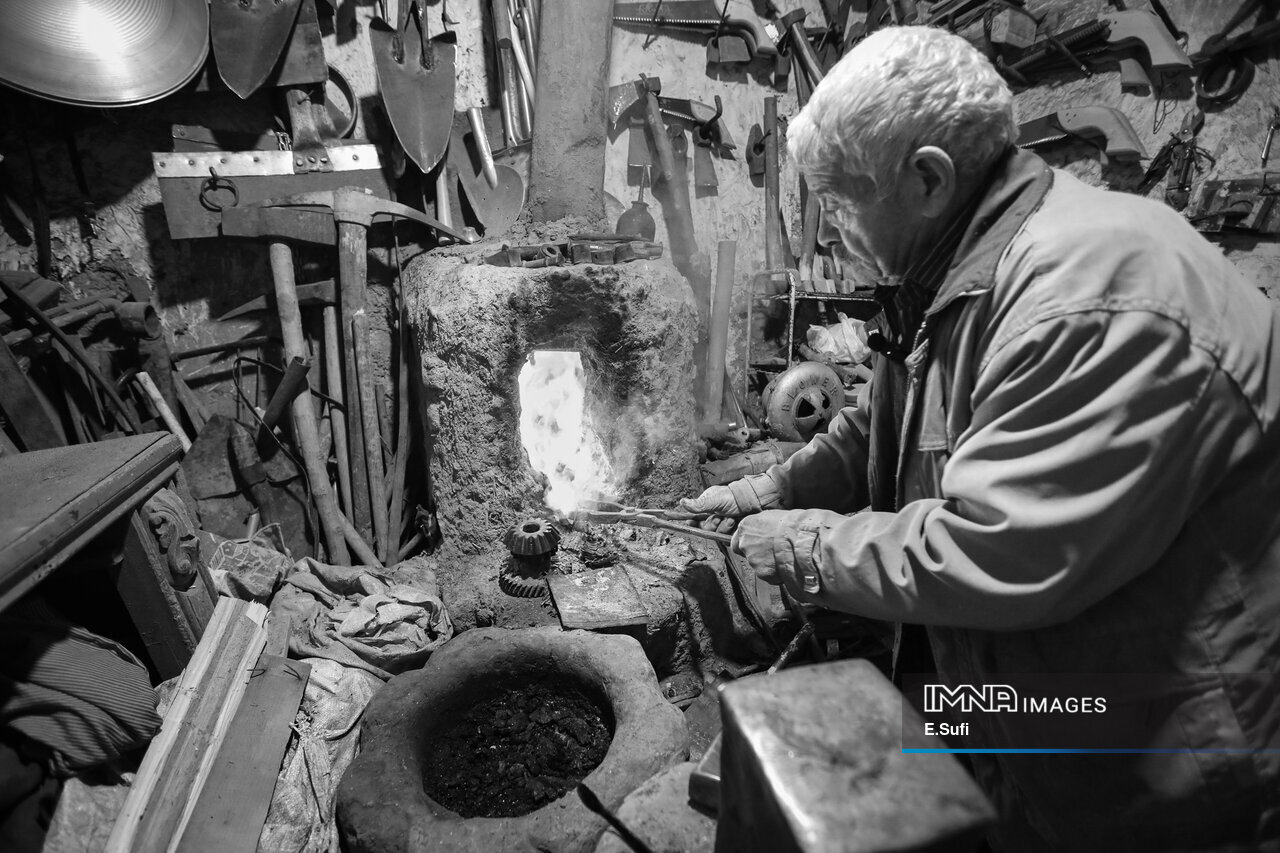Chalangari, the ancient art of blacksmithing in Iran

TEHRAN - In the heart of Iran's Markazi province, where the echoes of ancient craftsmanship still resonate, the art of blacksmithing stands as a testament to human ingenuity and resilience.
This age-old craft, known locally as Chalangari, is not merely a profession but a cherished cultural heritage that has shaped the lives of countless artisans and their communities.
Master Hossein Kaveh, one of the last remaining practitioners of Chalangari, has dedicated his life to preserving this ancient craft. For seventy years, he has kept the flame of blacksmithing alive, crafting tools and items that are both functional and beautiful, ensuring that this invaluable tradition continues to inspire future generations, IMNA reported.
Blacksmithing in Markazi has roots that stretch back thousands of years, deeply intertwined with Iranian civilization. Historically, blacksmiths were revered as essential figures in society, crafting tools and weapons vital for survival.
As iron replaced bronze around 1400 BC, blacksmiths played a crucial role in advancing agricultural and military technologies, forging everything from horseshoes to plows that supported the region's economy and development.
The blacksmith's workshop was a hub of activity, filled with the rhythmic sounds of hammer striking iron, the hiss of metal meeting water, and the warm glow of the forge. Each piece crafted bore the artisan’s skill and spirit, reflecting both functionality and artistry. Many tools featured intricate designs, showcasing the blacksmith’s craftsmanship by merging utility with beauty.
In recent years, efforts have been made to revive this traditional craft in Markazi province. With many artisans aging and fewer young people entering the trade, initiatives have been launched to educate and engage new generations. Workshops have been established in places like Arak, where aspiring blacksmiths learn from masters who have dedicated their lives to this ancient art. These workshops aim not only to teach technical skills but also to instill a sense of pride in cultural heritage.
The revival is not solely about preserving old techniques; it is also about adapting them for contemporary use. Modern blacksmiths are beginning to create decorative items alongside traditional tools, blending age-old methods with modern aesthetics. This evolution reflects a broader trend in Iranian handicrafts, where artisans innovate while maintaining their heritage.
The significance of blacksmithing extends beyond its practical applications; it symbolizes resilience and continuity in Iranian culture. Markazi province, home to over 8,000 artisans across various handicraft sectors, maintains blacksmithing as a vital part of its identity. The community’s commitment to preserving this craft speaks volumes about their respect for history and tradition.
Moreover, blacksmithing embodies values such as patience, precision, and creativity—qualities deeply ingrained in Iranian culture. The act of forging metal is akin to sculpting one’s destiny; it requires both strength and delicacy, mirroring the challenges artisans have faced throughout history.
The effort serves as a reminder that even in an age dominated by technology and mass production, there is still immense value in craftsmanship that honors the past while forging pathways into the future. In every hammer strike and glowing ember lies a story waiting to be told. It is a story that connects generations through the timeless art of blacksmithing.
AM
